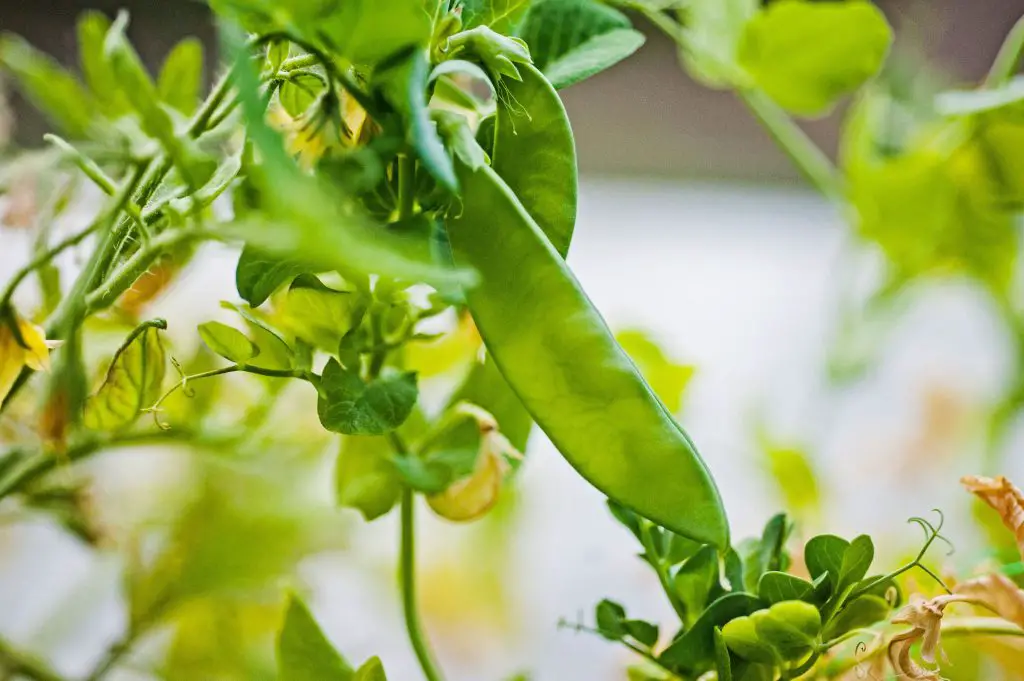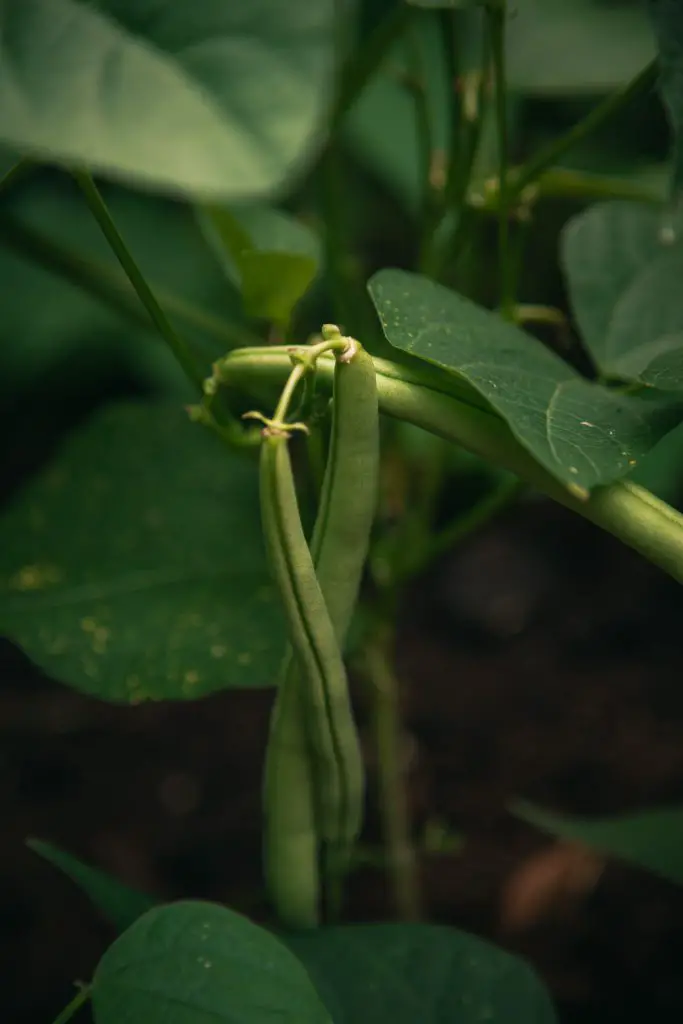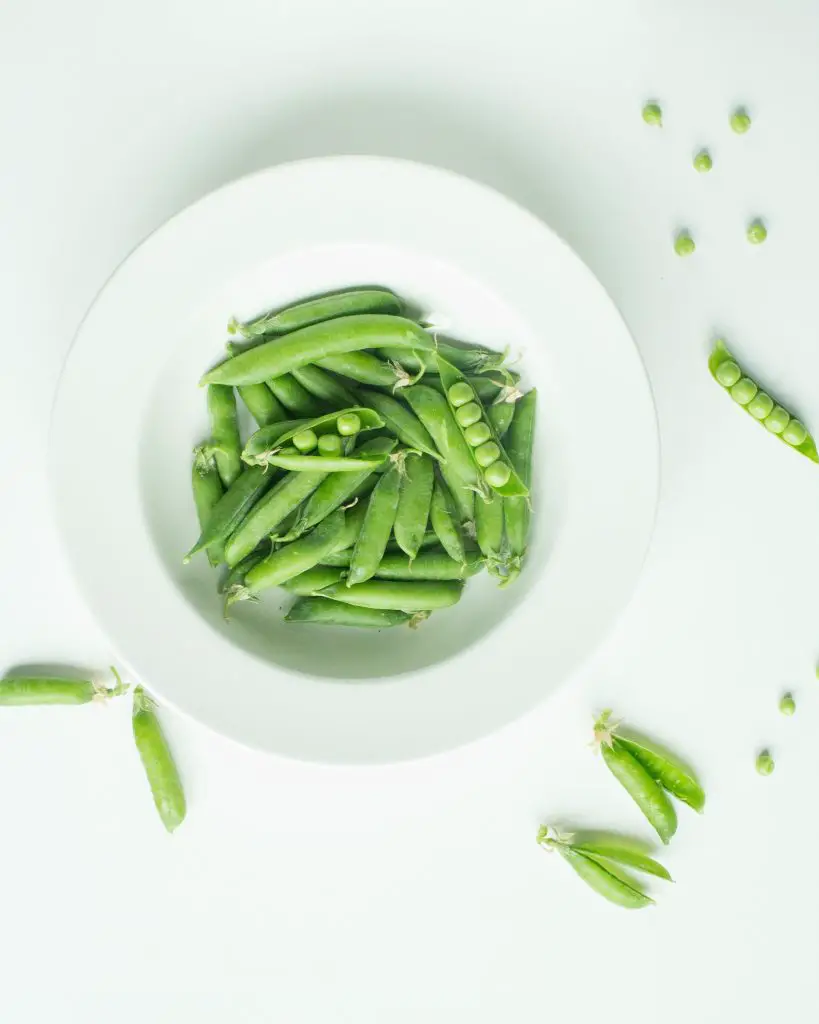What Is The Difference Between Green Beans And Sugar Snap Peas? Green beans and sugar snap peas are some of the most popular vegetables grown in the garden at home, however, many people get these two vegetables mixed up. So are they different names for the same thing or an entirely different species? What is the difference?
Green beans and sugar snap peas are distinctly different species but many people can get confused with them because both the seeds and pods of both vegetables can be eaten whole. However, green beans are generally relatively young immature pods of bean varieties whereas sugar snap peas are a particular variety of peas that do not have an inner membrane that makes the pod edible.
In addition, green beans have seeds within the pod that are kidney shaped whereas sugar snap peas generally have a spherical seed that is usually significantly sweeter than most bean varieties.
Sugar snap peas are generally a very popular variety to grow at home compared to peas that need to be shelled because there is significantly less work associated with getting a harvest from the plant as shelling peas can be a very time-consuming activity to undertake.

Differences In Green Bean And Sugar Snap Pea Plants
In addition, the seeds being distinctly different in green bean and sugar snap plants are also quite different from each other. Green beans can come from either dwarf or climbing plants. The climbing plants can reach up to 6-7ft (2m) tall and will produce spindly vines that wrap around support structures and climb up them without any assistance. Whereas the dwarf varieties will typically produce plants that are less than a foot tall and have relatively spindly stems which the beans will hang off.
In contrast, sugar snap peas, like all pea varieties typically produce growth that is 3 to 4 ft tall and requires a support structure to grow up on. However, these plants do not cling to the support structure as effectively as climbing beans. While they have tendrils that can wrap around the support structure these tendrils are not strong enough to keep the plant upright by themselves and usually require the plant to be tied into the support structure.
Additionally, the time of year which these plants grow also varies significantly as green bean varieties are frost sensitive and can only be planted after the first frosts have passed whereas sugar snap peas are plants that are extremely tolerant to cold and can tolerate frost or even snow in some cases.
However, the limitation of pea plants is they generally do not perform well in hot conditions and are best grown in early spring or autumn as temperatures above 68 F (20C) will result in the plant dying back and stopping the production of fruit.
In terms of their appearance, they also have distinctly different shaped leaves green beans that tend to have a heart-shaped leaf that is relatively large compared to peas which have a narrow leaf but the plant stems are thicker.

How To Grow Green Beans And Sugar Snap Peas
Both plants are relatively easy to grow and can be sown either directly into the garden or into seed trays. Sowing green beans into seed trays is advantageous in terms of getting an earlier crop because you can bring the seed tray indoors to protect the plant from frost whereas sugar snap peas are more tolerant of cooler conditions and therefore tend to be more frequently planted directly into the garden.
However, if you are planting the seeds of either green beans or sugar snap peas into a seed tray start by filling it with good quality seed raising mix and ensuring that you firm it down into each cell to form solid plugs as this makes it easier to transplant the plant later on.
As most pea and bean seeds germinate very reliably I tend to only plant 1 seed per cell however some gardeners will plant two or three seeds per cell just to make sure that they get at least one plant in every cell coming up in the seed tray. As both types of seed are relatively large they are typically planted at a depth of approximately 1 inch and both plans will typically take 7 to 10 days to appear depending upon the climatic conditions in which the plants are being grown.
Both plants are relatively fast growers and typically, in reasonable conditions, only need to spend 4 weeks in the seed tray before they have reached the height of around 3 to 4 inches and are ready to go out into the garden.
Alternatively, these plants can be planted directly into the garden. Typically for beans, this is done by planting 2 to 3 seeds around the base of each support structure that goes into the ground on the inside of the structure. This allows the beans to naturally climb up the support structure without having to tie them in. However, it is important to ensure that bean seeds are planted when the risk of any frost has passed as beans are susceptible to frost damage.
Peas on the other hand tend to be grown in rows with a straight support structure and this can be done early in the season even if there are relatively frosty conditions. To plant the seedlings most gardeners usually make a furrow along the base of the structure that is approximately an inch deep and sprinkle the seeds into the furrow at a distance of approximately an inch or two apart.
Whether you are planting directly into the garden or transplanting seedlings it is also important to protect the seeds and seedlings from things like slugs and snails by sprinkling snail bait around the seedlings.

Caring For Beans And Peas
Once the plants are in the ground and have had time to become established there is generally not a great deal of work required other than to ensure that the beans and peas are attached to their structures. This Is far more likely to be a problem with peas which have tendrils that are generally not strong enough to support the weight of mature plants. The simplest way to ensure that the peas remain upright is to run a line of string across the front of the plants to push them onto the support structure. As peas can reach a height of somewhere between 2 and 4ft it may be necessary to have more than one line of string as the plants get taller.
Harvesting Peas And Beans
Both peas and beans will produce flowers which are followed shortly afterward by the formation of pods. Beans and peas need to be picked regularly once the pods begin forming to encourage the plant to continue to produce them for as long as possible. Both beans and snap peas can be frozen after being blanched if you end up with a glut.
Ensure that you don’t have to buy any more peas and beans seeds next season it is advisable to put some pods aside and allowed them to dry out which is relatively easy to do as it is not necessary to shell the beans or peas before storage. They will be quite happy to sit on a shelf somewhere and dry out over the winter.
I hope you found this article useful and have great success growing beans or peas at home in your own garden if you have any additional comments or questions please leave them in the section below.
Relevant Articles
How Long Does It Take For Green Beans To Germinate? How Does Temperature Effect It?
Can You Eat Peas Raw Straight From The Plant? (That Includes Snow Peas)
What Is The Sweetest Pea To Eat?
